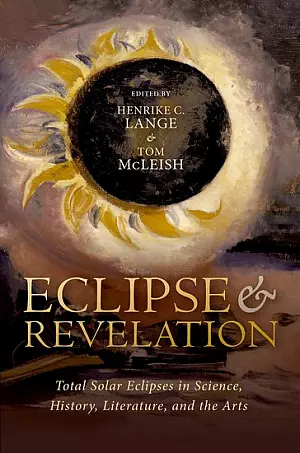Author: Lynn Cunningham
Pop-up Exhibit: Eclipse & Revelation: Total Solar Eclipses in Science, History, Literature, and the Arts
Eclipse & Revelation: Total Solar Eclipses in Science, History, Literature, and the Arts
In collaboration with the Earth Sciences & Map Library, Art History/Classics Library, Art History and Astronomy departments, this pop-up exhibit will feature maps and materials inspired by the April 8, 2024 Total Solar Eclipse and “Eclipse & Revelation,” a newly published book by Henrike Lange which shows total solar eclipses from the interdisciplinary perspectives of the sciences, arts, humanities, history, and theology.
Join us to explore the representation of eclipses through maps, images, music, and film.
More information, see the event calendar, https://events.berkeley.edu/Library/event/239296-eclipse-revelation-total-solar-eclipses-in, and the online guide: https://guides.lib.berkeley.edu/mapsandmore/eclipse2024
Eclipse & Revelation: Total Solar Eclipses in Science, History, Literature, and the Arts
Edited by: Henrike C. Lange and Tom McLeish
Exhibit organizers:
Henrike C. Lange, Associate Professor, History of Art department
Lynn Cunningham, Art Librarian
Sam Teplitzky, Open Science Librarian
Townsend Berkeley Books Chat with Margaretta Lovell
Painting the Inhabited Landscape: Fitz H. Lane and the Global Reach of Antebellum America
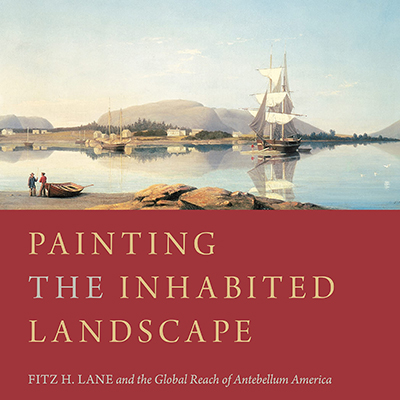
The impulse in much nineteenth-century American painting and culture was to describe nature as a wilderness on which the young nation might freely inscribe its future: the United States as a virgin land, unploughed, unfenced, and unpainted. Insofar as it exhibited evidence of a past, its traces pointed to a geologic or cosmic past, not a human one.
The work of the New England artist Fitz H. Lane, however, was decidedly different. In Painting the Inhabited Landscape (Penn State, 2023), Margaretta Lovell (History of Art) singles out the modestly scaled, explicitly inhabited landscapes of Fitz H. Lane and investigates the patrons who supported his career, with an eye to understanding how New Englanders thought about their land, their economy, their history, and their links with widely disparate global communities.
Lane’s works depict nature as productive and allied in partnership with humans to create a sustainable, balanced political economy. What emerges from this close look at Lane’s New England is a picture not of a “virgin wilderness” but of a land deeply resonant with its former uses — and a human history that incorporates, rather than excludes, Native Americans as shapers of land and as agents in that history.
Calling attention to unexplored dimensions of nineteenth-century painting, Painting the Inhabited Landscape is a major intervention in the scholarship on American art of the period, examining how that body of work commented on American culture and informs our understanding of canon formation.
Lovell is joined by David Henkin (History). After a brief discussion, they respond to questions from the audience.
Library Orientation for Art Practice and Art History Students
Welcome back students! If you are interested in learning more about the wonderful library arts resources, please join us at one of our upcoming library orientation sessions. Current sessions offered include:
Tuesday, September 5th 1-2
Tuesday, September 5th 4-5
Friday, September 8th 12-1
Friday, September 8th 3-4
Please rsvp at: http://ucblib.link/orientationAHC
Registration will be capped at 20 students per session. New dates/times will be added to the rsvp form if the current offerings reach capacity. We will meet in the Art History/Classics Library (room 308, 3rd floor Doe Library).
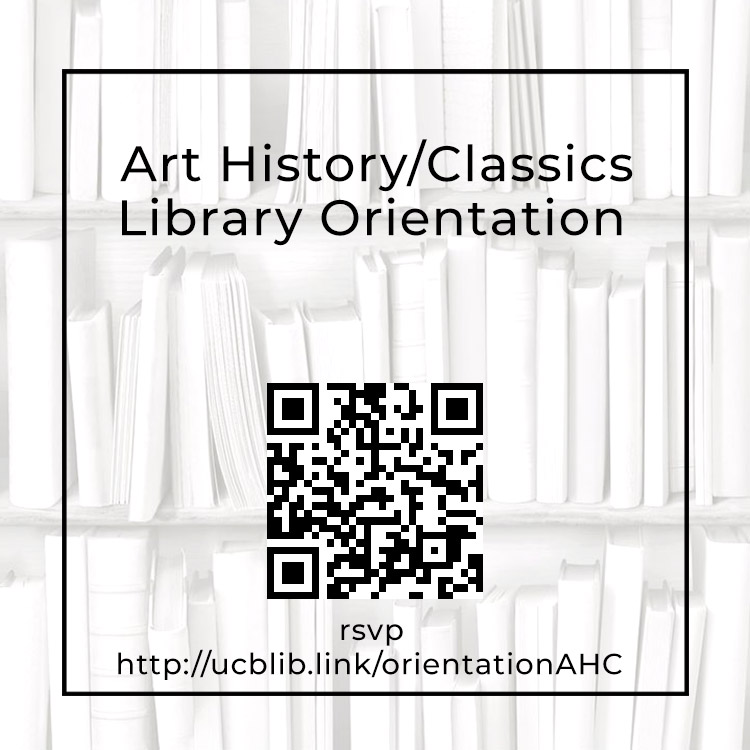
Four Notes on our Love of Books and our Need for Libraries
Four Notes on our Love of Books and our Need for Libraries
by Henrike Christiane Lange, Associate Professor of History of Art and Italian Studies, University of California, Berkeley
UC Berkeley, Spring Term 2023

A Note on Historical Books
The historical books in our collection are honeycombs of the centuries. They provide us not just with their specific knowledge from other times, but also with new insights about our own historical situation that we can only fully appreciate when seeing it compared to other eras. The material presence of historical books offers a shared experience with earlier readers – the readers of their time. Finally, the very awareness of the books’ own different time and place of origin generates a friction which allows us to progress with better consciousness and determination in our own timelines – not to be free-floating and lost in space, without time and context. The library thusly can both anchor us and liberate us at the same time in this process of discovery. Finally, a library of such historical objects for teaching and training is more than the sum total of the books. It is the select and familiar presence of those books together in an organized space, carved out of the chaos of the rest of the world as a refuge for the calm immersion into the records of others’ long-gone thoughts that spark the magic of understanding.
A Note on Scholarly Monographs
Monographs are little time machines: In a matter of hours, one can walk with the author through a specific and manageable field of knowledge, acquired over years, condensed yet decompressed, presented in a reader-friendly way, and focused on a valuable question. A monograph is not as short and shallow as a blog post, and it is not as limitless and infinite (therefore ungraspable) as the whole wide virtual cosmos of the world wide web. In a scholarly monograph, an author explores at the speed of the reader’s reading time what they have learned from having done years and decades of work of researching, reading, sorting, evaluating, weighing, expressing, writing, re-writing, and editing under the harsh conditions of double-blind peer review. This model can help enable readers and researchers to produce, eventually, their own unique contribution to a field in the form of a book – sent into the world to find its readers, way beyond the personal sphere of its author. The department library is the space to encounter and compare these kinds of books (at the height of their training, graduate students are expected to read up to a dozen of monographs per week in order to grasp their different styles, approaches, rhetoric, and strategies of presentation of the material).
A Note on Art History Libraries
Art history libraries have a double importance for the discipline, as they contain both secondary and primary sources: Books in art history research are not only containers of written, textual knowledge, or simple records of visual material, but also often serve as primary materials when they contain large or unique plates, a corpus of drawings, of maps, or of prints. They provide core materials such as large folio-sized works that outdo our screens, or plates that we use for comparisons in teaching around the table. Art History Libraries such as ours in Doe Library hold original documents that are themselves primary sources also when it comes to photo books and artist books, and the library’s rooms filled with books are our equivalent of a “lab” space. Large prints, maps, and photos need to be spread out on folio-size accommodating tables and compared, arranged, discussed with small groups in our training of emerging experts in our fields. The access to these physical materials together with small groups of students in a dedicated library space is an irreplaceable feature of the training of future architects and art historians. As is true for all our campus libraries, such specialized department libraries are not only collections somewhere without roots in time and space, but carefully grown, cultivated, specific places that have been assembled only here for a likewise growing and developing student population according to their specific needs.
A Note on Berkeley’s Libraries in the Now-Moment
Entering someone’s personal research library, fascinatingly, can feel like entering someone else’s brain – and to move about as if in a silent conversation with them, following their lead or jumping between sections and fields of knowledge, seeing the surprising and original connections that someone else made a long time ago, and getting inspired. The same applies to the experience of wonder and discovery in the large departmental, field-specific library: when we enter our library, we truly enter the good will, deep knowledge, and great care that generations of librarians, faculty, staff, and students have left there in invisible traces – in the objects as much as in the coherence, distribution, arrangement, and context of the objects. This is why off-campus storage removes the most important component from research, teaching, and learning; the eureka moments that can only happen on the quiet days alone in the library. We sometimes forget that not only the books and their authors speak to us, but all the caretakers and champions of the books that helped them find their way into our collection. As disciplines in the arts and humanities in a worldwide context that is hostile to the slow, deep, focused, and truly generative conditions of our work, we need those moments more than ever – not just the researchers, but especially our brilliant, insightful students.
Exhibit: Letters | الحروف How Artists Reimagined Language in the Age of Decolonization
Letters | الحروف How Artists Reimagined Language in the Age of Decolonization
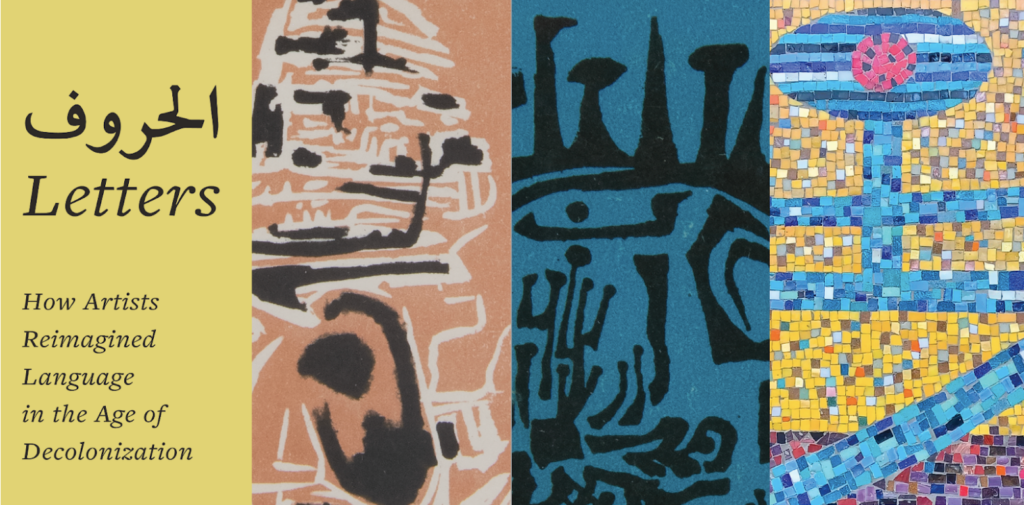
Left to right: art by Mohammed Khadda, Ibrahim El-Salahi, and Bedri Rahmi Eyüboğlu (details)
Letters | الحروف How Artists Reimagined Language in the Age of Decolonization is on exhibit in Doe Library’s Bernice Layne Brown Gallery from March 13 until Aug. 31, 2023. How have modern artists in North Africa, the Middle East, and South Asia made use of their inheritance of a visual cache of Arabic signs and letter-forms, and with what meanings? This exhibition, curated by students in the seminar History of Art 192Cu, “Exhibiting Calligraphic Modernism,” in collaboration with the Library, explores work by dozens of artists in multiple media, from poster design to painting, mosaic, poetry, and animation. A shared backdrop to the artwork on display are the decolonization processes and liberation struggles taking place across Asia, Africa, and Latin America in the 1950s, 1960s, and 1970s, which sparked desires to create cultural futures in resistance to dominant imperial values and official language policies.
Exhibit Curators: Drew Atkins, Riana Azevedo, Lynn Cunningham, Sharan Dulai, Eva Elfishawy, Mohamed Hamed, Teddi Haynes, Murtaza Hiraj, Viv Kammerer, Shanti Knutzen, Marissa Lee, Anneka Lenssen, Val Machado, Jasmine Nadal-Chung, Reyansh Sathishkumar, A. Wara, Alice Xie, Jinyu Xu, Suri Zheng, and Hayley Zupancic
Exhibit dates: March 13 to Aug. 31, 2023
Location: Bernice Layne Brown Gallery, Doe Library
Opening reception
Wednesday, March 15, 2023, 5-6:30 p.m.
Morrison Library
The reception will feature brief remarks by members of the curatorial team. Tours of the exhibition will be led by student-curators beginning at 5:45 p.m. Food and drinks will be served.
A pre-reception event will take place from 2:30-4:30 p.m. in 308A Doe Library, and will include a presentation and Arabic calligraphy workshop by the Bay Area-based calligrapher Zubair Simab. Participants will have an opportunity to try writing Arabic letters with a prepared pen and ink. There are 40 slots available for the workshop. Please register here: http://ucblib.link/calligraphyRSVP.
Both of these events are open to the public.
Details:
Wednesday, March 15, 2023
Pre-reception calligraphy workshop
2:30-4:30 p.m.
308A Doe Library
Register: http://ucblib.link/calligraphyRSVP
Exhibit reception and tours
5-6:30 p.m.
Morrison Library (101 Doe Library)
If you require an accommodation to fully participate in this event, please contact Amber Lawrence at libraryevents@berkeley.edu or 510-459-9108 at least 7-10 days in advance of the program.
Sponsors/contributors: Center for Middle East Studies, Department of History of Art, and UC Berkeley Library
Arts/Visual Collections Showcase
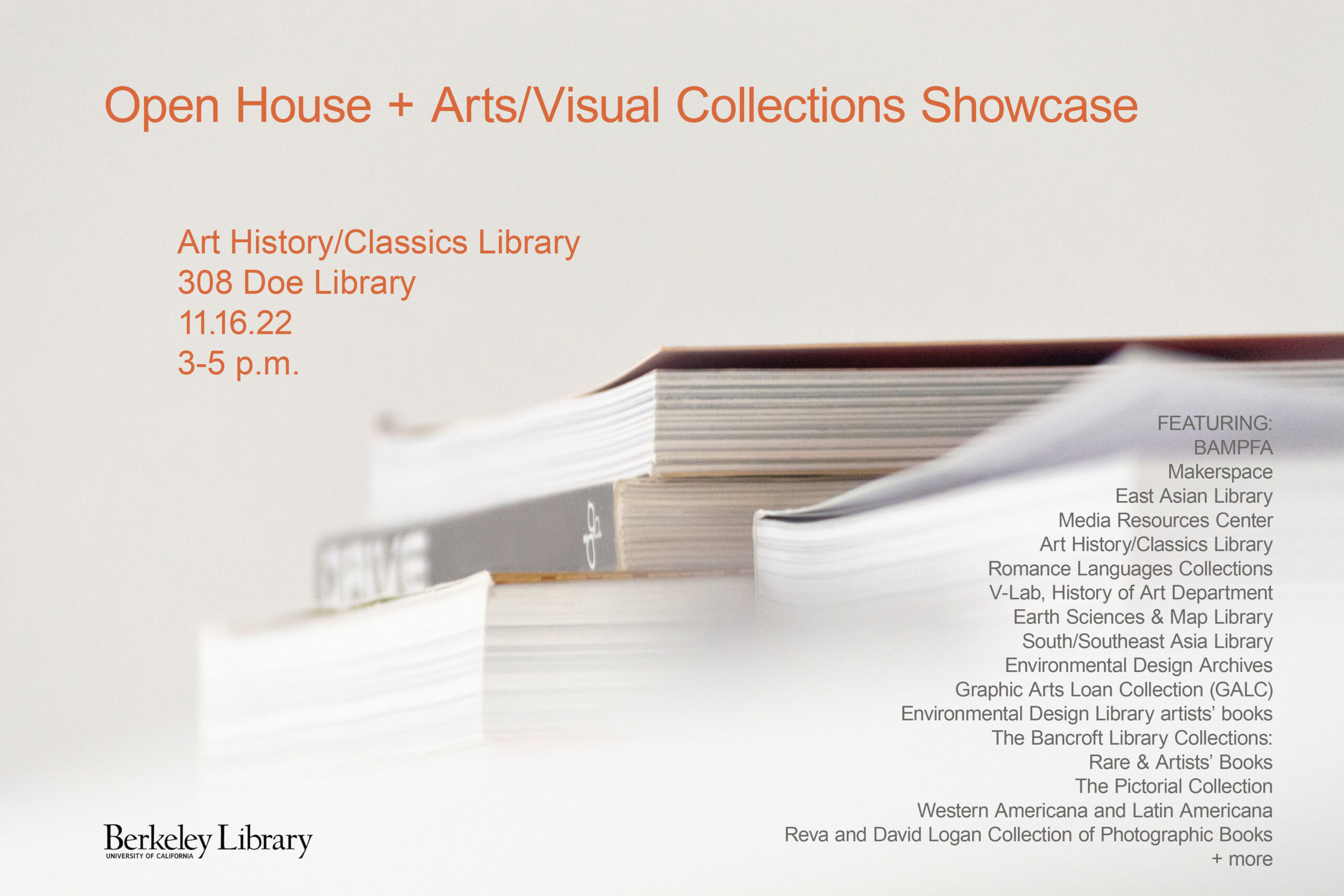
Join us for an open house and 50th anniversary celebration of the Art History/Classics Library. We will be showcasing arts-related and visual collections from across the UC Berkeley Library in a book-fair-style event featuring collection highlights and outreach materials. Come and learn about our many arts-related library holdings.
Wednesday, November 16th
drop by anytime between 3-5 p.m.
Art History/Classics Library
Room 308 Doe Library
Art History/Classics Library Orientation Sessions for Art Practice and History of Art majors
Welcome back students! If you are interested in learning more about the wonderful arts library resources, please join us at one of our upcoming library orientation sessions. Current sessions offered include:
Friday, August 26th 3-4
Monday, August 29th 2-3
Friday, September 9th 11-12
Please rsvp at: http://ucblib.link/orientationAHC
Registration will be capped at 20 students. New dates/times will be added to the rsvp form if the current offerings reach capacity. We will meet in the Art History/Classics Library (room 308, 3rd floor Doe Library).
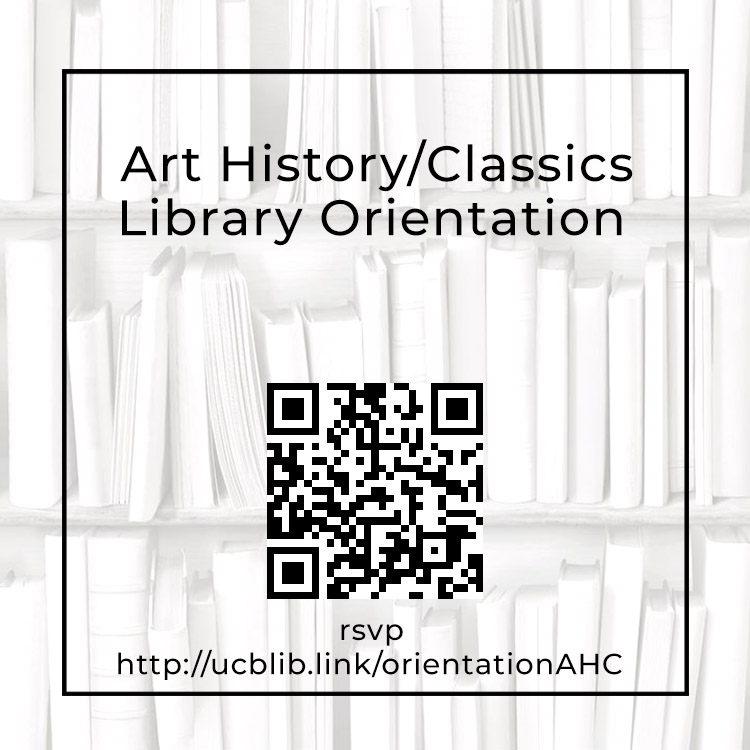
Passing of Professor Emerita Joanna G. Williams
From the History of Art department obituary written by Sugata Ray, Associate Professor in History of Art:
“Professor Emerita Joanna G. Williams, distinguished scholar of South and Southeast Asian art, passed away at her home in Berkeley on June 16, 2022, at the age of eighty-four. She was one of the foremost scholars of South and Southeast Asian art and architecture and, indeed, one of the most well-regarded for her seminal work on fourth- and fifth-century sculpture and architecture as well as later folk traditions.”
See the full obituary on the department website.
In honor of her life and work in the field of South and Southeast Asian art and architecture, we share here some of her publications in the field, and her image collections from her travels shared via the Artstor Public Collections.
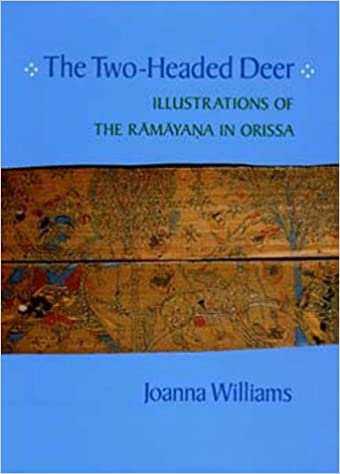
Kingdom of the sun: Indian court and village art from the Princely State of Mewar
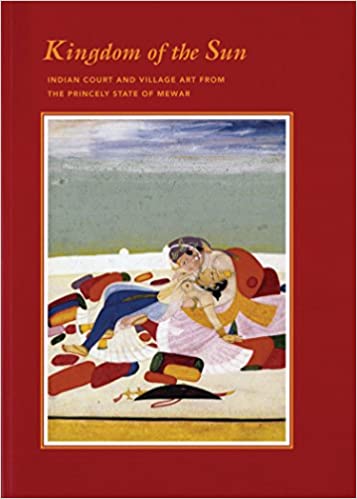
Moffitt Library Student Art Exhibit 2020-2021
Moffitt Library Student Art Exhibit 2020-2021
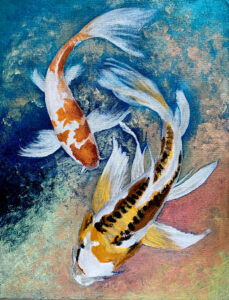
Graduation year: 2022
Major: Psychology and Art Practice

SilkScreen on Cotton Paper
Henry Davis
Graduation year: 2021
Major: Global Studies
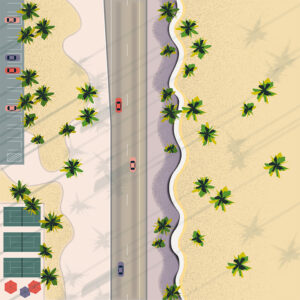
Graphic design
Kiana Aryan
Graduation year: 2020
Major: Linguistics, Cognitive Science

Oil on canvas
Albert Cartagenes
Graduation year: 2022
Major: Art Practice and Art History
Trial of Art & Architecture ePortal

UC Berkeley has a trial subscription to the ‘Yale Art and Architecture ePortal‘ through July 22, 2020. The portal includes access to eBook versions of many publications on art and architecture from Yale University Press and beyond. The site can be accessed from a campus IP address or through the VPN at: https://www.aaeportal.com
Here is more information about the portal from the publisher website:
“This innovative and dynamic electronic platform provides individuals and institutions with access to important art and architectural history scholarship. With grant funding from The Andrew W. Mellon Foundation, Yale University Press has developed this site to make key backlist and out-of-print titles on a wide variety of subjects more broadly available and easily discoverable within an interactive platform. The ePortal also features scholarship from other leading university presses and museum publishers, creating a meaningful and robust educational experience.”
Some of the features of the Yale Art and Architecture ePortal include:
Read offline by printing or saving chapters as PDFs
Highlight and take notes within online reader
Share links to chapters or books with students
Embedded image zoom within online reader
Full-text searching capabilities
Image searing capabilities
